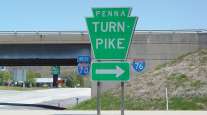cleveland.com
Ohio Turnpike to Launch More Complex Toll Structure

[Stay on top of transportation news: Get TTNews in your inbox.]
COLUMBUS, Ohio — The Ohio Turnpike is preparing to overhaul the way it calculates tolls starting this fall, which will help the turnpike’s finances but have varying effects on motorists’ wallets.
Other changes are coming to the turnpike, too, including allowing E-ZPass users to drive through many toll plazas without needing to fully stop.
Until now, turnpike drivers have been charged tolls based on where they got on and off the 241-mile highway. Under the new system, which turnpike officials hope to launch in early fall, a more complex tolling system will be put in place, according to turnpike spokesman Charles Cyrill.
Turnpike drivers coming into Ohio from Indiana or Pennsylvania will each have to pay a flat rate toll upon entering the state, with rates depending on the size of the vehicle and whether they have an E-ZPass transponder.
Westbound passenger vehicles headed out of Ohio into Indiana will also have to pay an additional toll of $2 for E-ZPass holders and $3 for people paying with cash or credit card.
Eastbound traffic, however, won’t be charged any toll at the Pennsylvania border.
In addition to the border tolls, turnpike drivers also still will have to pay a mileage-based toll, but only if they drive somewhere between toll plazas near Swanton (mile marker 49) and Newton Falls (mile marker 211).
The amount drivers between those two toll plazas will have to pay still will depend on how far they drive on the turnpike.

Host Michael Freeze clarifies the differences between predictive and preventive maintenance. He gives fresh commentary on everything from how enhanced connectivity boosts your preventive maintenance plans to what predictive possibilities AI can offer your shop. Tune in above or by going to RoadSigns.ttnews.com.
Compared with turnpike toll rates entering 2023, the new toll rates effective Jan. 1, 2024, will be more expensive for some routes, but the same or cheaper than before for others.
For example, a car headed westbound straight through Ohio, with no E-ZPass, would pay a total of $25.25, compared with $21.50 right now.
Eastbound drivers in cars crossing the state with no E-ZPass, though, will save a quarter, paying $21.25 instead of $21.50.
Another example: Someone leaving Sandusky, Ohio, who gets on the turnpike from U.S. 250 and exits at Interstate 71 near Strongsville currently pays $2.75 with an E-ZPass and $3.75 with no E-ZPass. Under the new system, that person will still pay $2.75 if they have an E-ZPass but $4.25 if they pay via cash or credit card.

Cyrill
Motorists who don’t drive between the Swanton and Newton Falls toll plazas, meanwhile, will not have to pay any mileage-based tolls at all. There will no longer be toll plazas at the exits closest to the Indiana and Pennsylvania borders — exits 13, 25, 34 and 39 in Northwest Ohio, and exits 215, 216, 218, 232 and 234 in the Youngstown area, Cyrill said.
The reason for that, he said, is that the number of vehicles using those nine exits is so low that it costs the turnpike more to operate tollbooths there than it collects in toll revenue.
Nonstop Tolls
Another change the Ohio Turnpike is making is to allow E-ZPass customers to drive through any tollbooth without needing to stop. Each tollbooth will have dedicated E-ZPass lanes where vehicles can drive through at low speeds (10 miles per hour), and electronic sensors will automatically determine how much to charge each driver’s account.
Drivers without an E-ZPass will still have to stop at tollbooths to pay with cash or a credit card. The turnpike is setting up cameras to catch the license plates of non-E-ZPass drivers who use E-ZPass lanes; those drivers will then receive a bill in the mail.
Along the turnpike itself, pavement sensors are being installed to detect trucks that carry overweight loads without a permit.
Effects of the Changes
The changes, as a whole, will result in more money for the turnpike. During the first year of the new toll system, the turnpike will save $2.7 million in operating costs and make about $2.4 million more in revenue, according to estimates provided by Cyrill.
Over the next 30 years, the new system will save an estimated $257 million in operating costs, Cyrill wrote in an email.
By comparison, the turnpike’s 2023 operating budget anticipates spending about $143 million this year on operations, maintenance and administration along with another $135 million or so in debt payments. The turnpike expects to collect more than $391 million in revenue this year under its current operating budget.
Construction, renovation and removal of toll plazas along the turnpike as part of the new system has been underway for some time and will continue for months to come.
Construction on the Westgate toll plaza near the Indiana border is scheduled to be done in a couple weeks, while renovation work on the Eastgate toll plaza close to the Pennsylvania borders is expected to continue through next spring, Cyrill said.
In the meantime, work on each of those two toll plazas will continue to cause some traffic delays and backups during peak hours, Cyrill said.
“It’s important to keep in mind — [the delays] are temporary,” he said.
Want more news? Listen to today's daily briefing below or go here for more info:
Distributed by Tribune Content Agency, LLC


